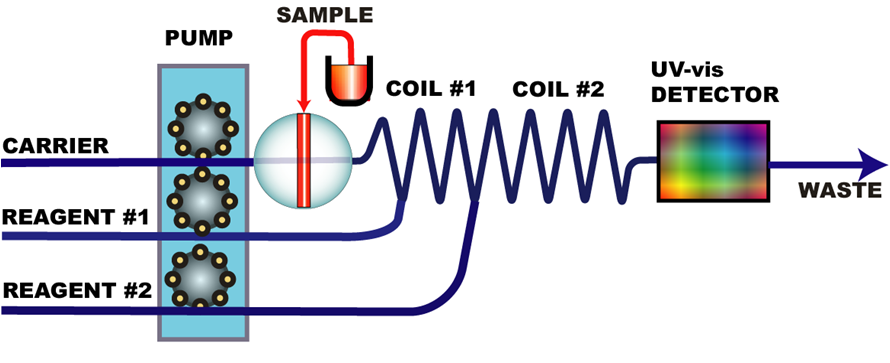I.3.
In 1974, and for preceding 20 years, air bubbles were viewed as the essential component of any flow analytical systems since, removal of air segmentation would result in loss of integrity of individual samples, as they moved downstream and throughout a detector. Also my experience with AutoAnalyzer let me believe that flow analysis can not be performed without air segmentation, until one day, in spring 1974, we performed an experiment with Elo Hansen, which made us to think otherwise (Chapter 5) Hansen 2008. We, of course, did not realize at that time, that we discovered a method, which will became a topic of more that 20,000 papers and over 20 monographs, blossoming into a variety of techniques such as flow injection, sequential injection and bead injection, and will even inspire development of sequential injection chromatography.
Flow Injection (FI), the first generation of FIA techniques, was designed as a continuous flow technique (Chapter 1). In its simplest form, the sample zone is injected into a flowing carrier stream of reagent. As the injected zone moves downstream, the sample solution disperses into the carrier stream, forming a concentration gradient. Next, reagent is added at a confluence point, and a product begins to form, as the sample disperses on the way to the detector.
The Concentration Gradient
The instrument comprises a peristaltic pump, injection valve, reactor coils and a flow trough detector. The readout is result of two processes taking place simultaneously: sample dispersion and chemical reactions (Ruzicka & Hansen 1975 and Theory 1978). The individuality of samples is preserved by processing only one sample at a time. The frequency of the assays is accelerated by selecting rigorously controlled flow conditions, that yield reproducible results from kinetic response, available long before physical and chemical equilibria would have been reached. FI instruments are produced by FIAlab, Global FIA and Lachat.
E.H.Hansen ”Flow Injection, Its Origin and Progress” Ch. 1 in Advances in Flow Injection Analysis and Related Techniques S.D.Kolev and I. D. McKelvie Eds. Elsevier Amsterdam 2008
Discovery consists in seeing what everyone else
has seen and thinking what no one else has thought.
Albert Szent-Gyorgi











